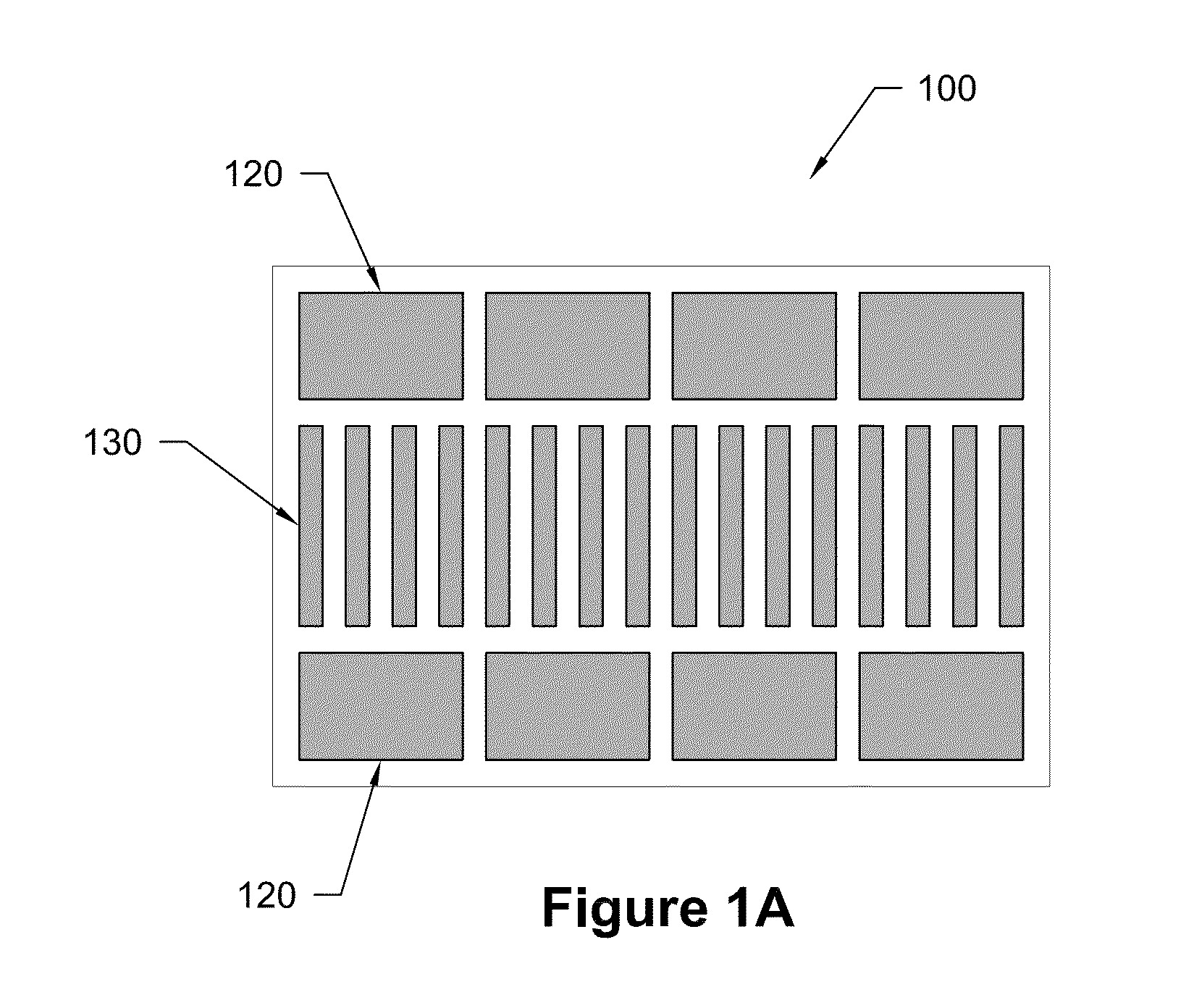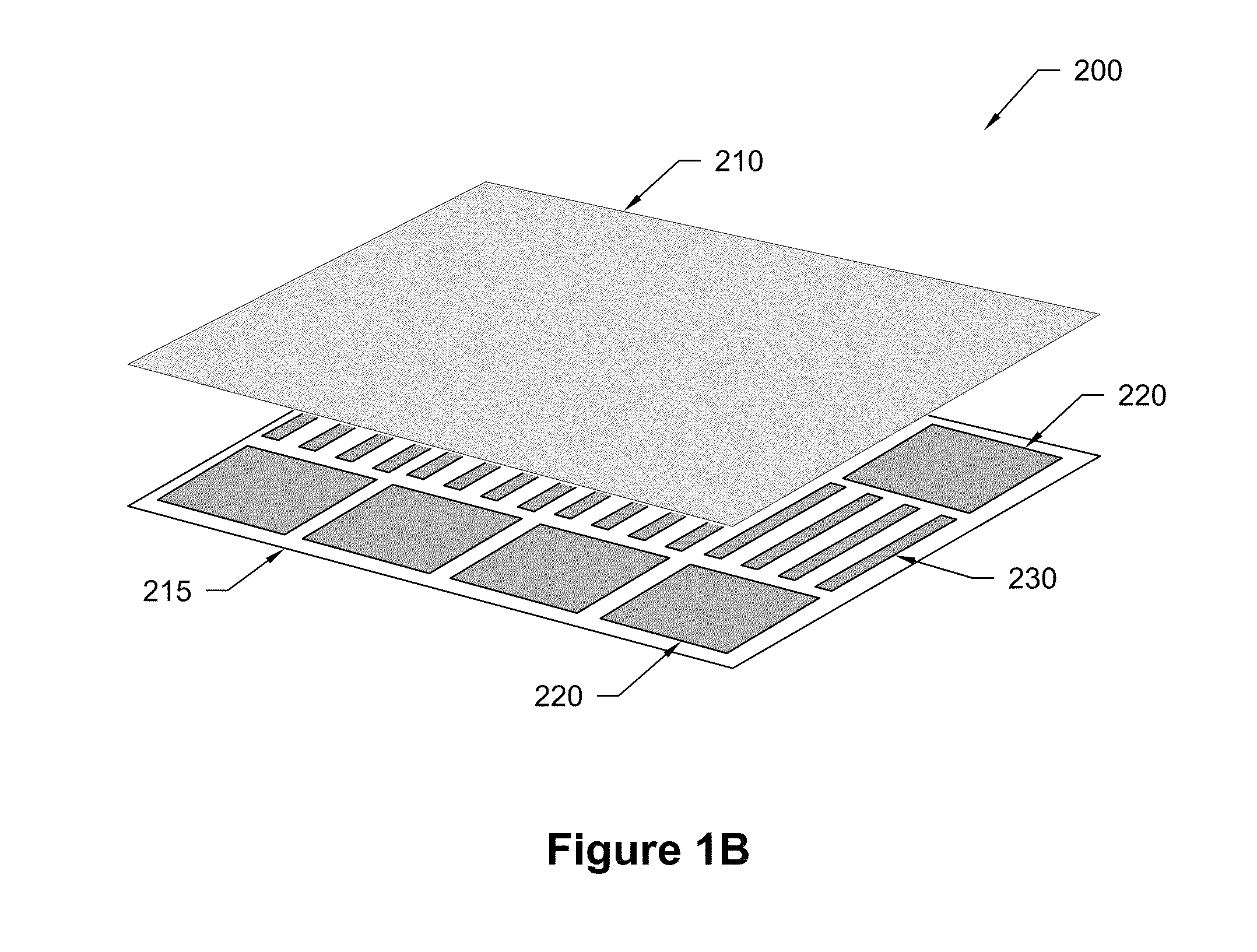Ion manipulation method and device
a technology of ion optics and ion beams, applied in the direction of electron/ion optical arrangements, electric discharge lamps, particle separator tube details, etc., can solve the problems of increasing the cost and/or inefficiency of conventional instrument designs and ion optic approaches, and increasing the cost of instruments. , to achieve the effect of improving performance, reducing the possibility of trapping effects, and improving the m/z rang
- Summary
- Abstract
- Description
- Claims
- Application Information
AI Technical Summary
Benefits of technology
Problems solved by technology
Method used
Image
Examples
example
[0080]The following examples serve to illustrate certain embodiments and aspects of the present invention and are not to be construed as limiting the scope thereof.
[0081]A device, as shown in FIG. 1B, was used to manipulate ions injected from an external ESI source. Simulations were performed to refine the design of the device; e.g. electrode sizes and spacing between the planar surfaces were adjusted. Boards were fabricated with electrode regions to test capabilities that included efficient ion transportation, ion mobility separations, ion trapping, and ion switching between alternative corridors or paths.
[0082]In one test, ions were introduced from the external ESI source and injected into one of the ion corridors at a pressure of ˜4 ton. RF frequencies of approximately 1.4 MHz and 140 Vp-p were applied to create repulsive fields to confine ions within the ion corridors between the opposing board surfaces. The RF fields were combined with DC for further confinement to the corridor...
PUM
 Login to View More
Login to View More Abstract
Description
Claims
Application Information
 Login to View More
Login to View More - R&D
- Intellectual Property
- Life Sciences
- Materials
- Tech Scout
- Unparalleled Data Quality
- Higher Quality Content
- 60% Fewer Hallucinations
Browse by: Latest US Patents, China's latest patents, Technical Efficacy Thesaurus, Application Domain, Technology Topic, Popular Technical Reports.
© 2025 PatSnap. All rights reserved.Legal|Privacy policy|Modern Slavery Act Transparency Statement|Sitemap|About US| Contact US: help@patsnap.com



